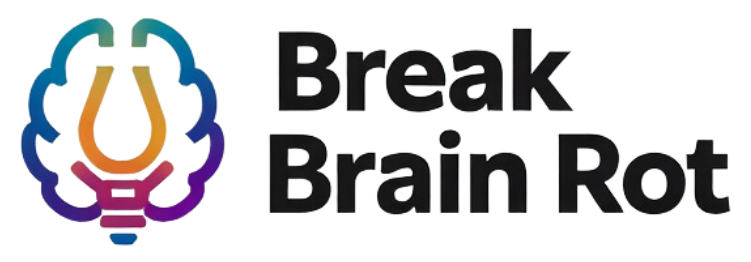1. **Analyze the article title and focus keyword:**
– **Focus Keyword:** Negative effects of doomscrolling
– **Incorporation Strategy:** Use the focus keyword naturally in the title, introduction (within first 100 words), conclusion, and at least once per section. Emphasize it in H2 or H3 headers where appropriate.
– **Synonyms / Related Terms:** consequences of doomscrolling, harmful effects of doomscrolling, impact of doomscrolling, doomscrolling dangers, psychological effects of doomscrolling.
– **Variations:**
1. Negative effects of doomscrolling on the brain
2. Psychological effects of doomscrolling
3. How doomscrolling affects mental health
4. Neurological effects of doomscrolling
5. Emotional effects of doomscrolling
6. Dangers of constant doomscrolling
7. Impacts of doomscrolling behavior
2. **Review the outline and article structure:**
– **Main Sections & Subsections:**
– Introduction (150 words)
– What Is Doomscrolling and Why Do We Do It? (200 words)
– Definition and origin of term
– Role of social media algorithms
– Human tendency for negativity bias
– Psychological Toll — Anxiety, Depression, Stress (200 words)
– Chronic negativity and anxiety
– Depression link
– Stress-compulsion loop
– How Doomscrolling Affects the Brain (200 words)
– Neurological response
– Emotional regulation
– Dopamine and reward systems
– Impact on Sleep and Daily Functioning (200 words)
– Blue light & circadian issues
– Sleep deprivation effects
– Daily performance drops
– Breaking the Cycle — Healthier Digital Habits (200 words)
– Device boundaries
– Mindfulness practices
– Curated content / detox
– FAQs (100 words)
– Conclusion (150 words)
– **Word Count Estimate:** ~1200 words total.
– **Flow:** Defines doomscrolling → psychological & brain effects → functional impact → recovery steps → conclusion.
3. **Secondary Keywords (7–10):**
– effects of doomscrolling
– mental effects of doomscrolling
– doomscrolling and anxiety
– ways to stop doomscrolling
– how doomscrolling affects mental health
– breaking doomscrolling habit
– doomscrolling addiction
– digital wellness
– mental fatigue scrolling
– controlling news consumption
4. **Plan introduction and conclusion:**
– **Introduction:** Start with a relatable scenario (late-night scrolling), define doomscrolling’s harmful impact, mention psychological strain, tease solutions.
– **Conclusion:** Recap mental and brain impacts, emphasize that awareness and simple changes lead to improvement, encourage adopting healthy digital habits.
5. **Potential FAQ Questions:**
1. What are the main negative effects of doomscrolling?
2. How does doomscrolling affect your brain chemistry?
3. Can doomscrolling cause depression or anxiety?
4. Is doomscrolling addictive?
5. How can I stop doomscrolling before bed?
6. Can reducing screen time reverse doomscrolling’s damage?
7. Why do we doomscroll even when it makes us feel bad?
8. How does doomscrolling affect productivity?
9. What are signs I’m doomscrolling too much?
10. Do mindfulness apps help stop doomscrolling?
6. **Keyword incorporation strategy:**
– **Focus Keyword:** Used in intro, at least twice in body (H2s and H3s), once in conclusion.
– **Secondary Keywords:** Spread across sections to complement SEO. For example, “mental effects of doomscrolling” in psychological section, “ways to stop doomscrolling” in final section.
7. **Content outline and hooks per section:**
– *Intro (150)*: Hook with real-life scenario of bedtime scrolling.
– *Doomscrolling Definition (200)*: Describe term origin, algorithm intent, and why negativity appeals.
– *Psychological Toll (200)*: Detail anxiety, depression, stress feedback.
– *Brain (200)*: Explain neurological mechanisms (dopamine, prefrontal cortex).
– *Sleep/Daily Functioning (200)*: Cover blue light, performance declines.
– *Breaking Cycle (200)*: Offer practical recovery tips, mindfulness habits.
– *FAQs (100)*: Concise answers linking to main points.
– *Conclusion (150)*: Motivate change and reinforce main ideas.
8. **Internal Linking Strategy:**
– Link to:
1. “Social Media Addiction” (#internal-link1)
2. “Coping with Anxiety” (#internal-link2)
3. “Digital Detox Guide” (#internal-link3)
4. “How Screens Affect the Brain” (#internal-link4)
5. “Tips for Better Sleep” (#internal-link5)
9. **Reader Challenges / Objections & Solutions:**
– “I can’t stop doomscrolling; it’s a habit.” → Provide step-by-step strategies and emphasize gradual change.
– “I need to stay informed.” → Suggest balanced, credible sources with time-limited consumption.
– “I don’t feel it affects me.” → Highlight subtle cognitive and emotional tolls with scientific backing.
– “I use scrolling to relax.” → Introduce alternative relaxation tactics.
– “Digital detox is unrealistic.” → Offer realistic micro-changes and mindful awareness.
Imagine lying in bed, thumb scrolling endlessly through distressing headlines long after midnight. If that scenario sounds familiar, you’re experiencing what’s known as doomscrolling—a digital habit that keeps your mind hooked on bad news and your stress levels high. The negative effects of doomscrolling reach far beyond lost sleep; they can harm your brain, heighten anxiety, and even change how you process emotions. In this article, you’ll discover the psychological and neurological toll of doomscrolling and simple, science-backed ways to reclaim your focus and peace of mind.
Table of Contents
- What Is Doomscrolling and Why Do We Do It?
- The Psychological Toll — Anxiety, Depression, and Stress
- How Doomscrolling Affects the Brain
- The Impact on Sleep and Daily Functioning
- Breaking the Cycle — Healthier Digital Habits
- FAQs
- Conclusion
What Is Doomscrolling and Why Do We Do It?
The term “doomscrolling” originated in the late 2010s, referring to the habit of endlessly scrolling through negative news and social media posts. It gained traction during global crises when people sought information but became trapped in a feedback loop of stress and fear. The effects of doomscrolling are amplified by our always-connected devices and the way digital platforms are designed to maximize attention.
Social media algorithms play a major role in reinforcing doomscrolling. They reward content that provokes strong emotions—especially fear or anger—keeping you engaged longer. This design turns your attention into a product and ensures that anxious users continue scrolling through distressing content. Learn more about Social Media Addiction to see how similar mechanisms drive compulsive use.
From an evolutionary standpoint, humans are wired to notice potential threats more than positive information. This “negativity bias” once helped our ancestors survive, but in the digital era, it fuels doomscrolling. We crave information to feel prepared, but constant negative input overwhelms the brain instead.
For psychological context, consult resources like the American Psychological Association and Harvard Health Publishing.
The Psychological Toll — Anxiety, Depression, and Stress
When you’re exposed to distressing content for hours, your body’s stress response remains active. Cortisol, the stress hormone, rises, leading to anxious feelings and restlessness. Over time, this chronic exposure contributes to persistent anxiety disorders. It’s one of the most concerning mental effects of doomscrolling because it keeps your fight-or-flight system switched on, even when you’re safe at home.
Beyond anxiety, doomscrolling deepens feelings of hopelessness. Constantly consuming bad news magnifies the belief that the world is dangerous and beyond control—one reason depression has been linked with excessive media use. Learn about strategies for Coping with Anxiety to counter these effects.
There’s also a stress-compulsion feedback loop: you feel uneasy due to negative news, scroll to find reassurance, then encounter more negativity, which fuels further scrolling. This loop drains emotional energy and exacerbates burnout, making it harder to disconnect. For further insight, visit trusted organizations like the National Institute of Mental Health (NIMH) and Mayo Clinic.
How Doomscrolling Affects the Brain
Neurologically, doomscrolling activates your brain’s threat-detection circuits. The amygdala, responsible for processing fear, becomes hyperactive while your prefrontal cortex—the region that regulates rational decision-making—loses control. Over time, this misalignment may lead to heightened emotional reactivity and difficulty focusing.
The prefrontal cortex also governs impulse control. As doomscrolling becomes habitual, your brain’s control centers weaken while reward pathways strengthen. This pattern mimics behavioral addiction, creating cravings similar to those experienced with gambling or social media overuse. To explore cognitive impacts further, see How Screens Affect the Brain.
Dopamine, the “feel-good” neurotransmitter, spikes briefly each time you encounter new information. However, when that information is negative, your dopamine system becomes dysregulated—seeking more content even when it leads to stress. This creates a paradoxical cycle: seeking comfort through behaviors that actually undermine wellbeing. You can read more on research from Neuroscience News and Scientific American.
The Impact on Sleep and Daily Functioning
Scrolling late into the night exposes your eyes to blue light, delaying melatonin production and disrupting circadian rhythms. This light tricks your brain into thinking it’s daytime, making restful sleep harder to achieve. Over time, disrupted sleep deepens stress and anxiety—the very symptoms you were trying to soothe by checking your phone.
Sleep deprivation further compounds the negative effects of doomscrolling. It weakens attention span, memory retention, and decision-making. The result? Reduced productivity and increased irritability during the day. Learn how to offset these effects with our Tips for Better Sleep.
Poor sleep also affects emotional stability and empathy levels, which can strain personal and professional relationships. The Sleep Foundation and CDC Sleep and Health Studies both emphasize the importance of digital boundaries for cognitive recovery.
Breaking the Cycle — Healthier Digital Habits
Escaping doomscrolling doesn’t require abandoning technology—it requires setting smart boundaries. Begin by choosing specific times to check the news and avoiding your phone upon waking or before sleep. Turning off non-essential notifications limits triggers for compulsive checking. These minor adjustments can significantly reduce the effects of doomscrolling.
Mindfulness practices are another powerful antidote. Simple breathing or meditation techniques train your brain to notice craving impulses without acting on them. Explore our Digital Detox Guide or learn techniques from credible resources such as Psychology Today or the Headspace Blog.
Finally, curate your content. Follow positive or educational profiles, unsubscribe from panic-driven news sources, and schedule “offline hours” daily. Balance leads to better mental clarity, emotional stability, and overall digital wellbeing.
Frequently Asked Questions
What are the main negative effects of doomscrolling?
Doomscrolling causes increased anxiety, poor sleep, emotional exhaustion, and cognitive fatigue. Long-term exposure to constant negativity can alter your brain’s stress response and lead to chronic worry patterns.
How does doomscrolling affect your brain chemistry?
It overstimulates the amygdala and releases erratic bursts of dopamine, creating a reward loop that reinforces compulsive scrolling behavior while damaging emotional regulation.
Can doomscrolling lead to depression or anxiety?
Yes. Studies show a direct correlation between prolonged exposure to negative news and higher rates of anxiety and depressive symptoms.
Is doomscrolling addictive?
While not officially classified as an addiction, doomscrolling shares neurological traits with behavioral addictions like gambling, making it similarly difficult to quit.
What are effective ways to stop doomscrolling?
Set time limits, practice mindfulness, and restructure your feed to promote positive content. Engaging in offline hobbies can also help reverse the negative effects of doomscrolling.
Conclusion
Doomscrolling may feel like staying informed, but its hidden cost is steep—psychological strain, impaired focus, and neurological imbalance. Understanding the negative effects of doomscrolling is the first step toward reclaiming mental clarity. By creating healthier digital routines, moderating media intake, and practicing mindfulness, you can protect your brain from information overload. Start small today—put the phone down at bedtime, take a deep breath, and remember that balance, not constant connection, nurtures mental wellbeing. Explore more about Building Healthy Screen Habits to keep your digital life in harmony.


